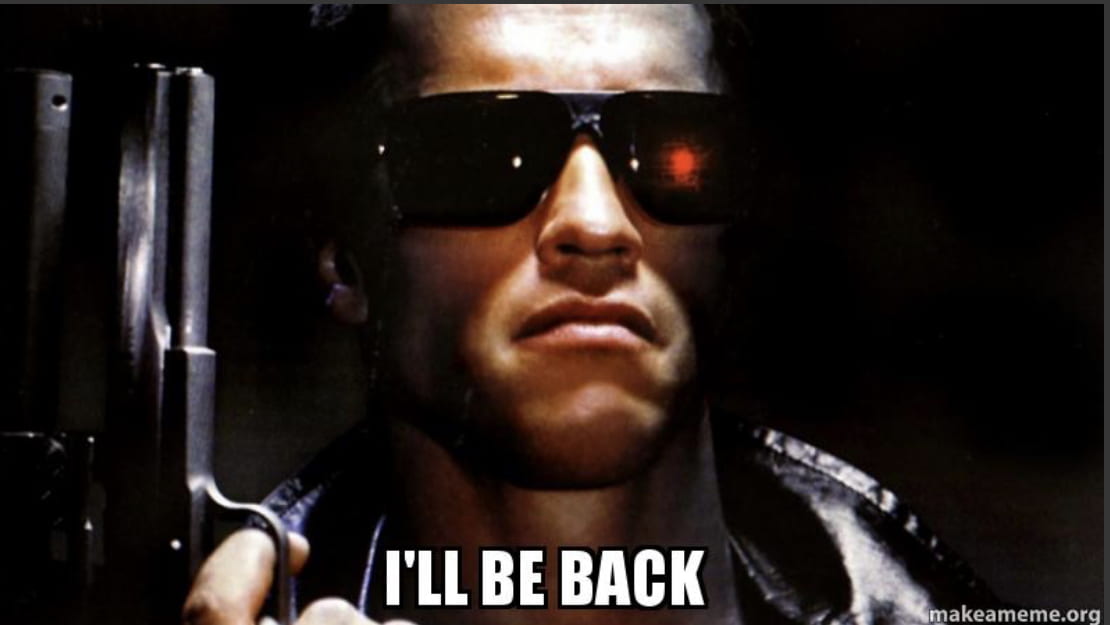In the 1984 science fiction movie The Terminator, the Terminator, a cybernetic android assassin from the future, pursues the two heroes of the movie, Sarah Connor and Kyle Reese relentlessly. Connor and Reese shelter in a police station, and the Terminator seeks entry, but is denied entry by a policeman at the door. He says to the policeman “I’ll be back” and returns in a car, which he crashes through the door of the police station, over the top of the officer who denied him entry. In later movies spawned by the first (the sequelae that never end?) “I’ll be back” comes to be the Terminator’s mantra: he never gives up, as will be evident from my description of the final scenes of the original movie (in my opinion, still the best of the series).
Over and over, in The Terminator, the two heroes think they’ve escaped him or killed him, but he just keeps going, despite an explosion which destroys the external layer of human flesh which makes him look human and reduces him to a metal skeleton. Eventually, Reese puts explosives in the Terminator’s metal torso (killing himself in the process) and it seems the Terminator is finally dead. His legs have been blown off, and the light in his eyes has faded. Then his red eyes light up again, and he starts dragging himself along with his arms, still intent upon killing Connor. This scene always horrified me—it’s something from our primal nightmares—the thing which just won’t stop.
You might wonder why I’m mentioning this on the High Court blog. I’m glad you asked! Famously, there is an Australian litigation equivalent to the Terminator: the litigation which just won’t die. However, it seems that after almost thirty years, the Bell Group litigation is finally over, and I could not let that momentous moment pass (akin to Sarah Connor releasing the hydraulic press upon the cybernetic android). Continue reading
